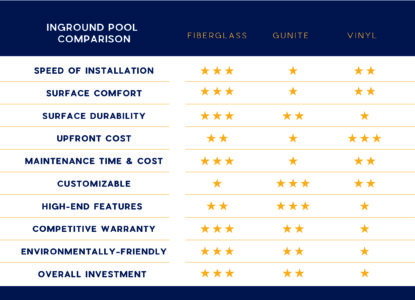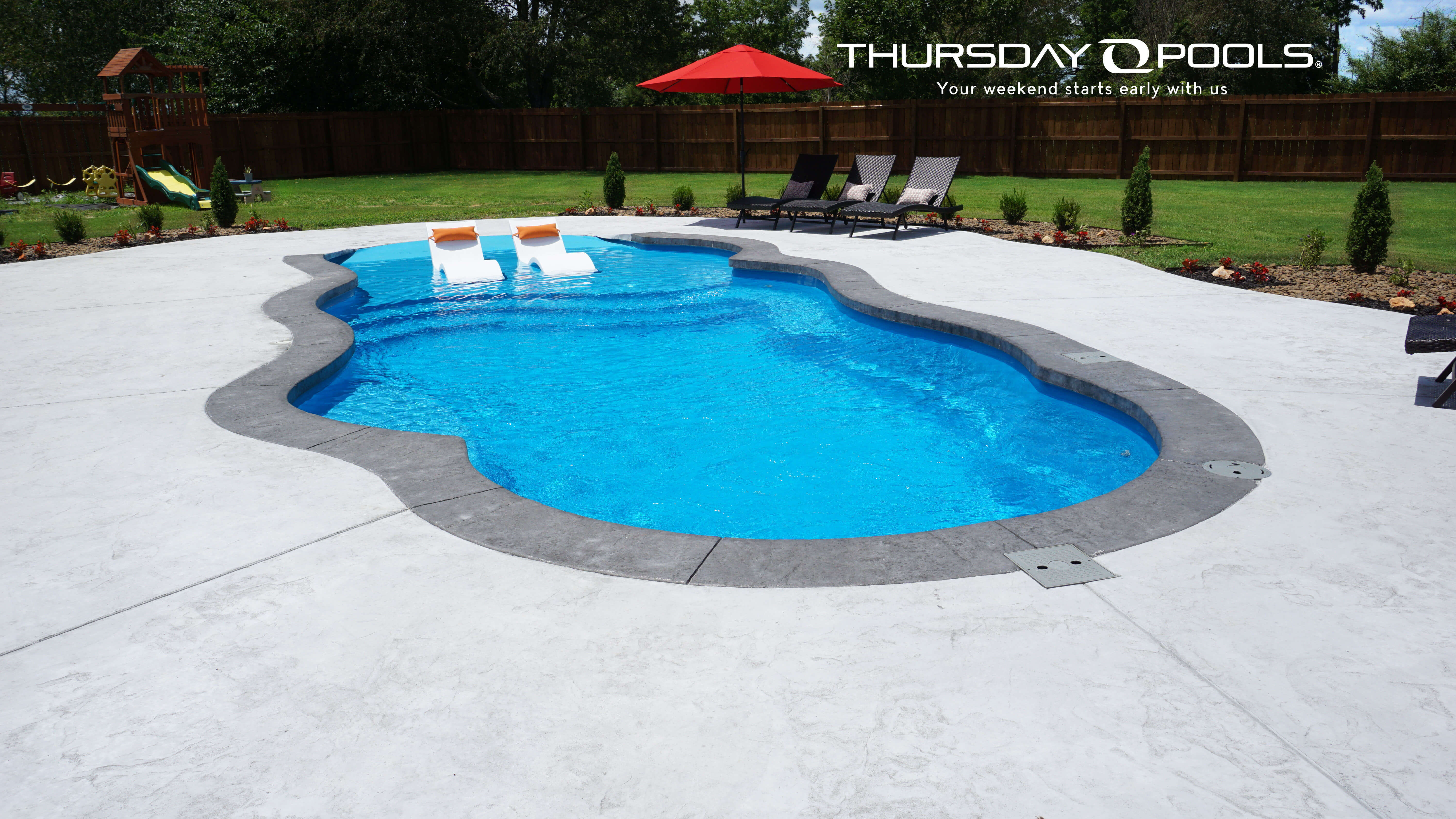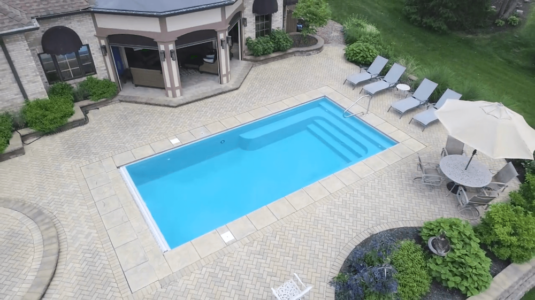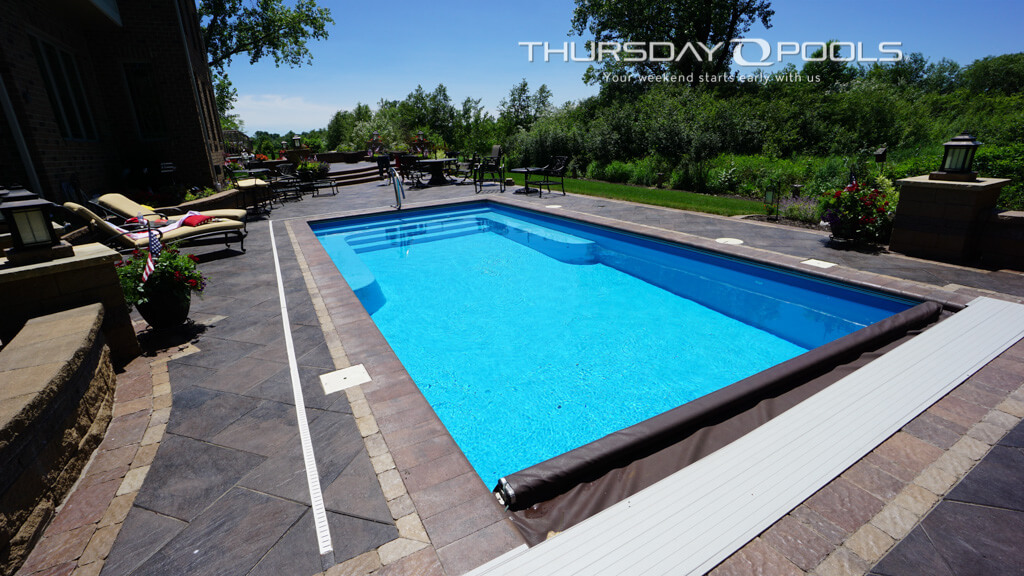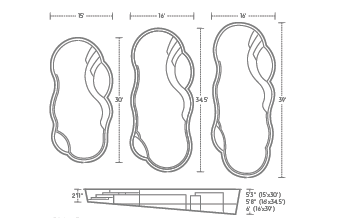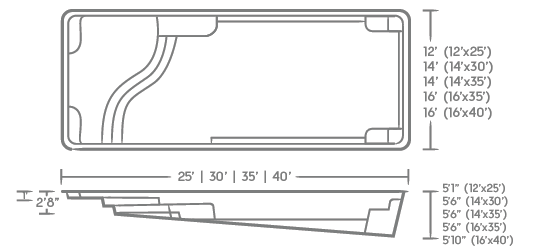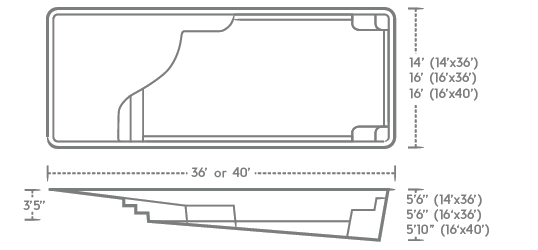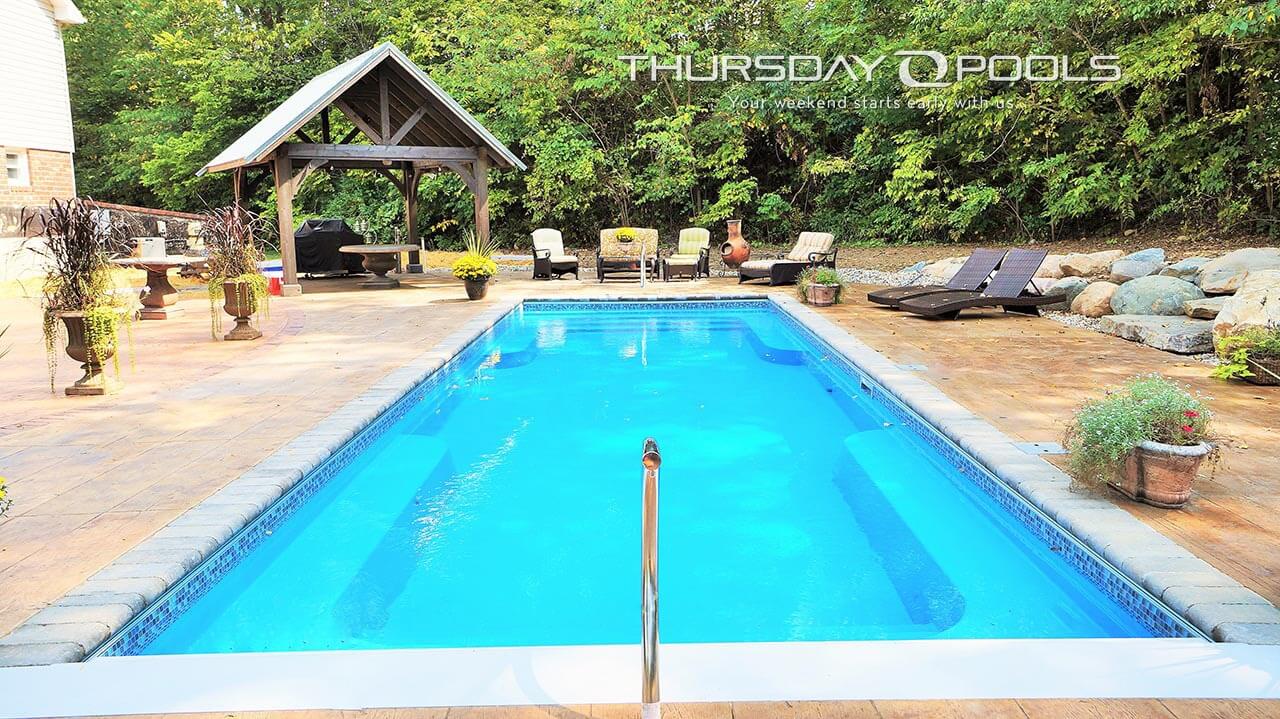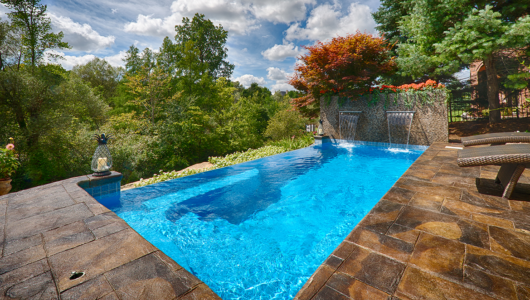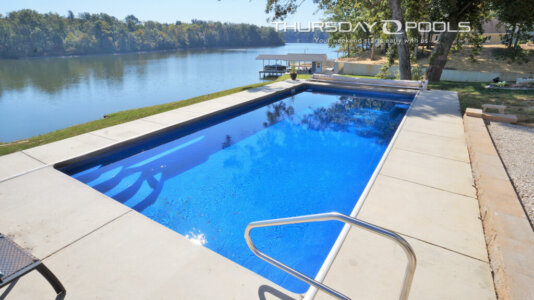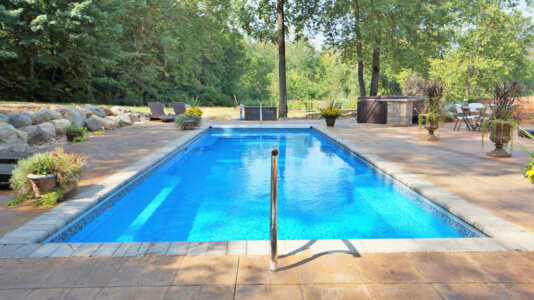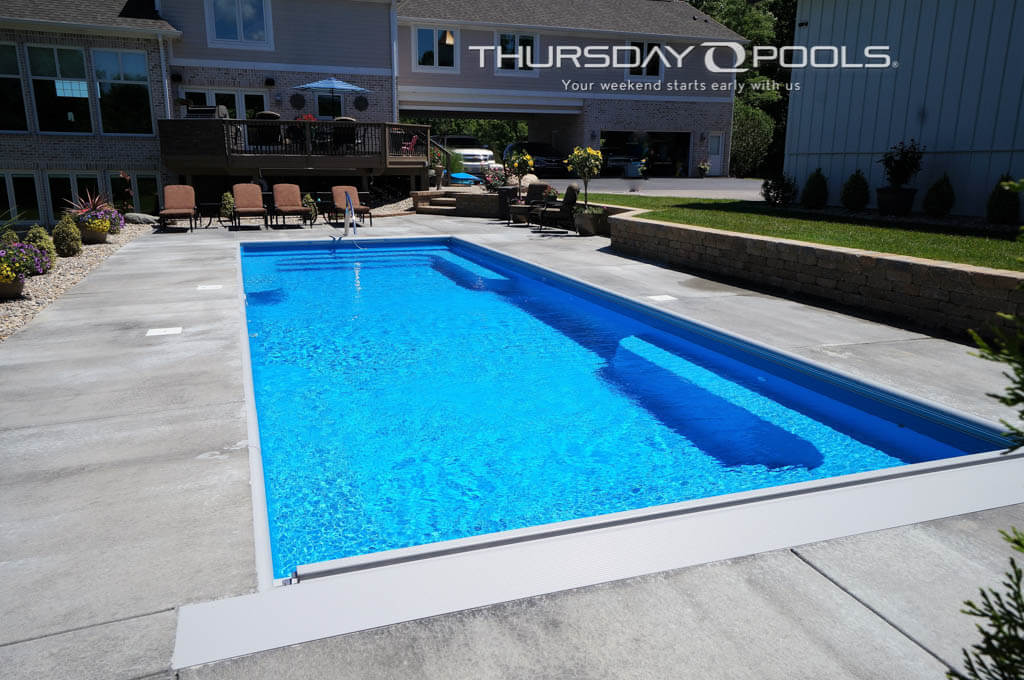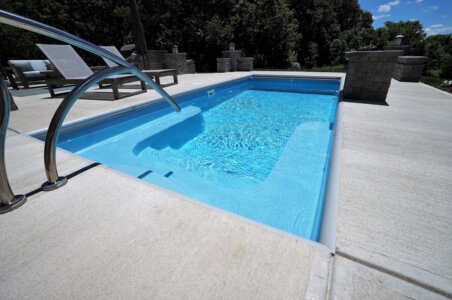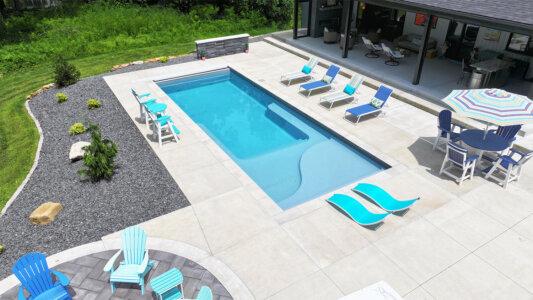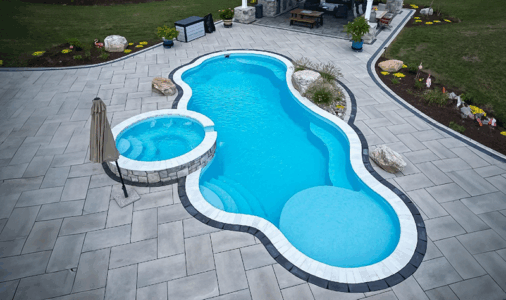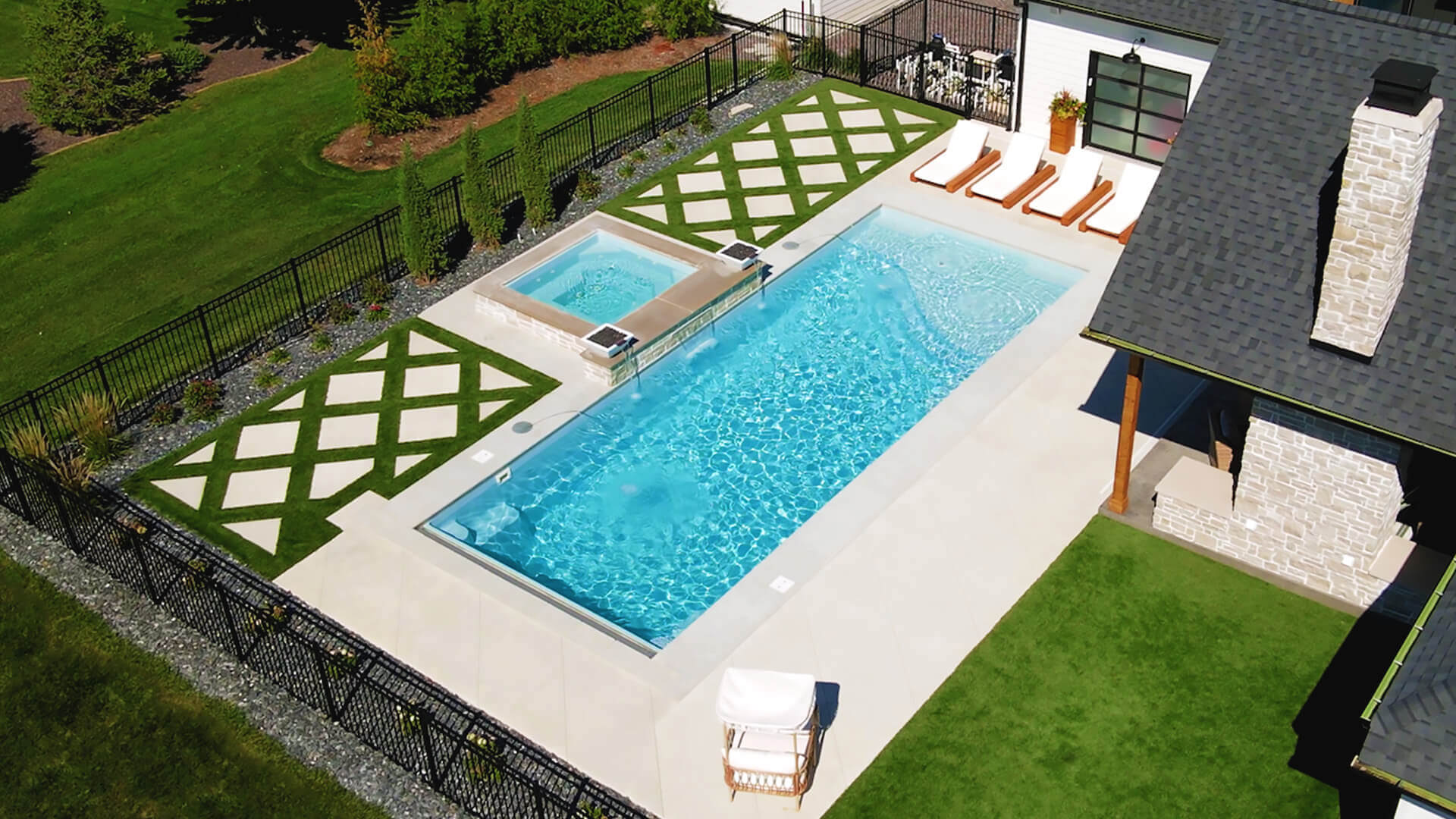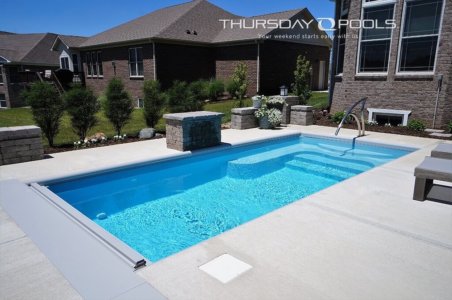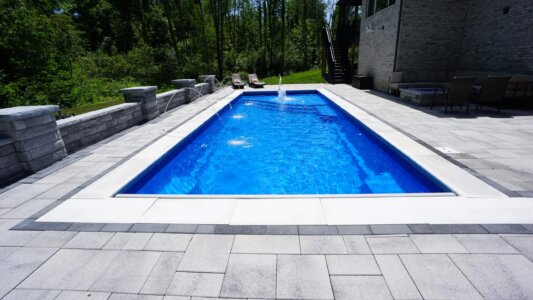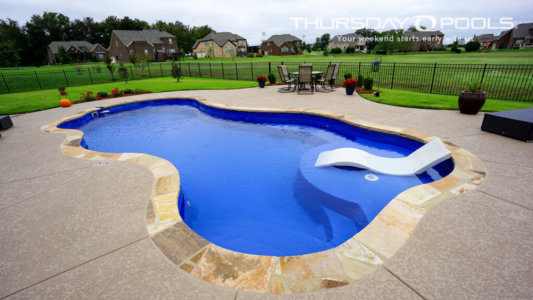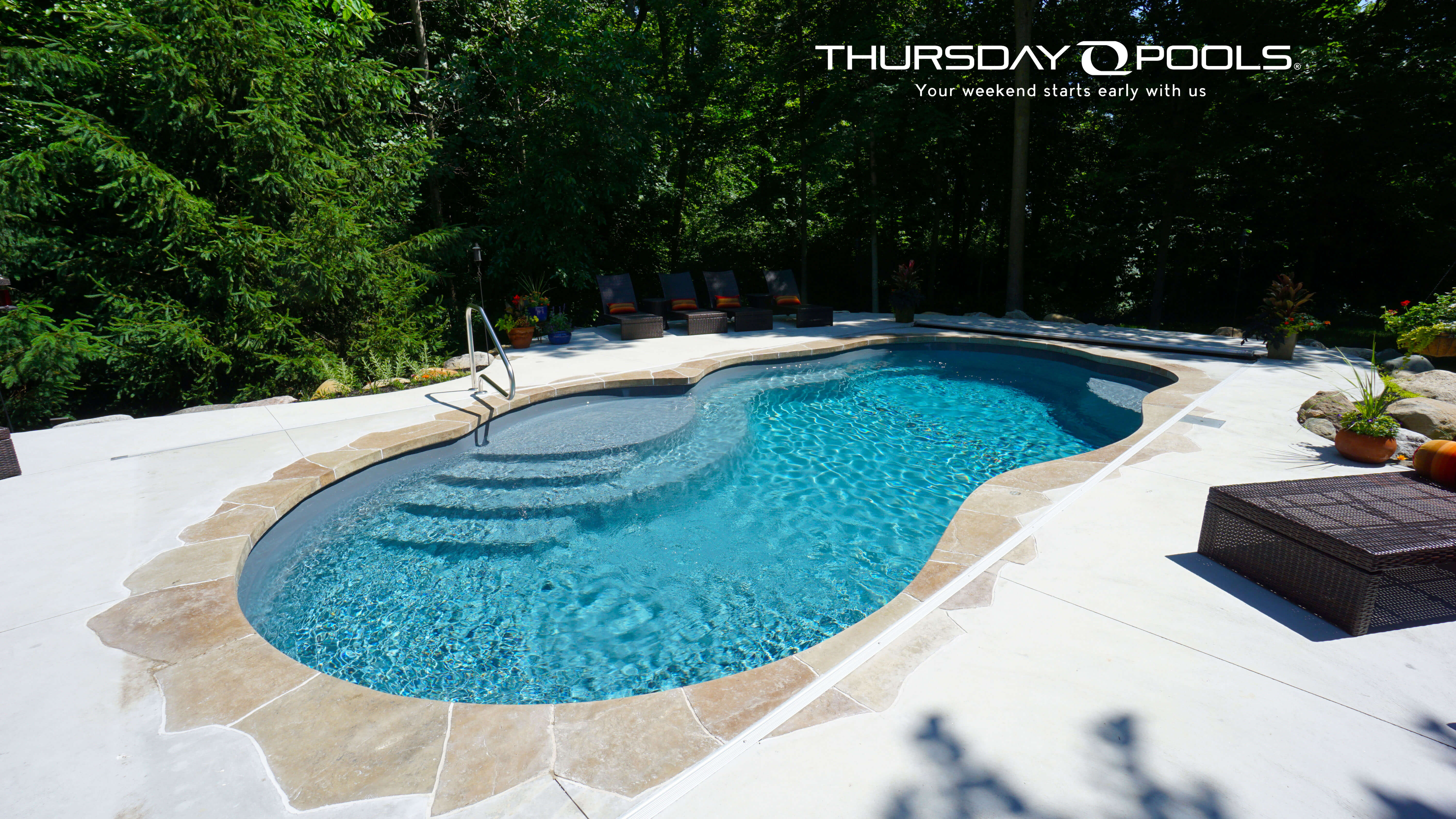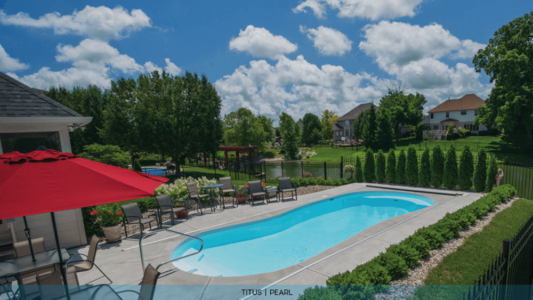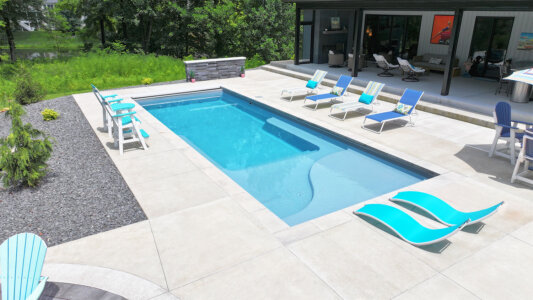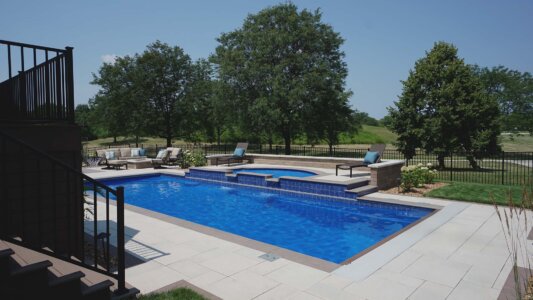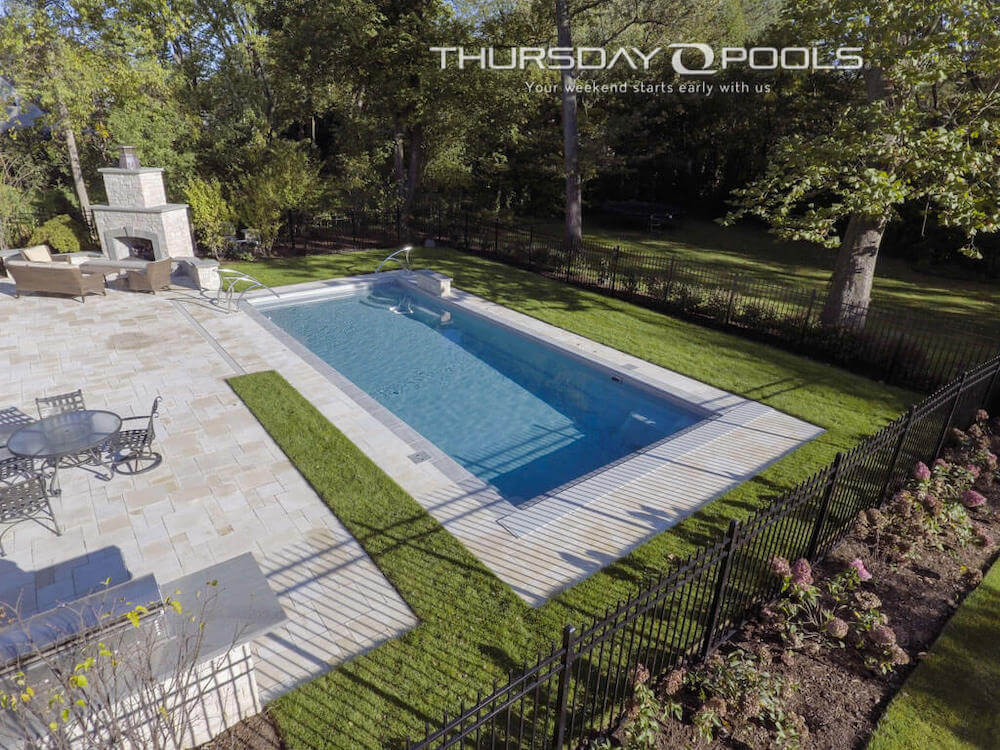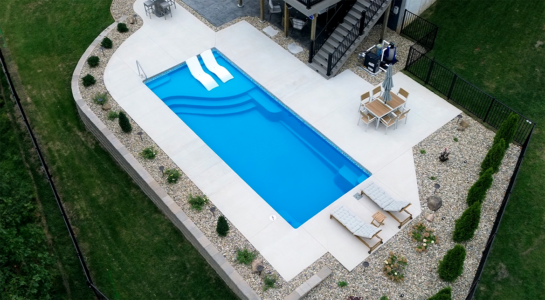From the rolling hills of North Georgia to the coastal plains along the Atlantic, the Peach State offers a rich blend of natural beauty and southern charm. With long, hot summers and mild winters, Georgia’s climate makes it an ideal place to enjoy a backyard pool nearly year-round. If you’re dreaming of turning your outdoor space into a personal retreat, understanding fiberglass pool cost in Georgia is an essential first step. Whether you’re in the vibrant metro area of Atlanta or nestled in a quieter corner like Savannah or Athens, your location, soil conditions, water table levels, and even local tree coverage can all influence the overall price of your pool installation.
Bringing your dream pool to life means more than just digging a hole—it’s about crafting an experience tailored to your needs and lifestyle. Every choice affects your final cost, from integrated spas and elegant water features to decking materials and landscape design. Georgia homeowners also need to consider permitting, zoning, and sometimes HOA approvals, which can add layers to the planning process. That’s why partnering with a trusted, local fiberglass pool installer who understands the regional nuances is the best way to ensure your project flows smoothly from start to swim.
Peach State Pool Pricing: What to Expect for the Average Fiberglass Pool Cost in Georgia
To help you better understand what bringing a fiberglass pool to your Georgia backyard might cost, Thursday Pools gathered fresh insights from our network of independent dealers throughout the state in a 2025 survey. Whether you’re planning a serene poolside escape in the suburbs of Atlanta or envisioning a quiet retreat in the rolling countryside near Macon or Augusta, knowing the average installation cost is a smart starting point.
AVERAGE GEORGIA FIBERGLASS POOL INSTALLATION BY SIZE
|
| Pool Type |
Small Fiberglass Pools |
Medium Fiberglass Pools |
Large Fiberglass Pools |
| Size Range |
Up to 26 ft Long or 400 ft² |
26 to 34 ft Long or 400 to 600 ft² |
35 ft and Longer or 600+ ft² |
| Average Cost |
$60,000 |
$100,000 |
$120,000 |
Georgia’s diverse landscape—from red clay in the north to sandy soils near the coast—the cost of excavation and site prep can vary significantly depending on where you live. Add personalized features like integrated spas, stylish water features, or custom stone decking; your total investment can shift accordingly. While these average figures offer a solid foundation for planning, the best way to get a true estimate is to connect with a knowledgeable, Georgia-based Thursday Pools dealer who understands the local conditions and can tailor a quote to your specific site and vision.
Average Pricing for Georgia’s Top Fiberglass Pool Picks
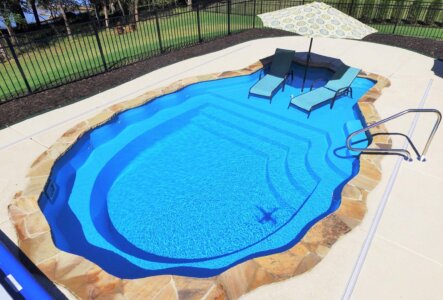
PERAL (15’ x 25’)
The Pearl is a fantastic choice for Georgia homeowners looking for a compact yet elegant fiberglass pool. At 15′ in width and 25’ in length, it’s perfect for mid-sized backyards in cities like Atlanta, Marietta, or Augusta. The pool features a spacious tanning ledge and built-in wrap-around benches, making it ideal for lounging and socializing. Its sleek, non-skid surfaces ensure comfort and safety for all swimmers.
Based on insights from our 2025 survey of Thursday Pools dealers in Georgia, the average cost for a standard Pearl installation is around $60,000. Of course, fees may vary depending on site preparation, location, and any additional customization like landscaping or spa features.

CATHEDRAL (14’ x 33’)
The Cathedral is an ideal fiberglass pool for Georgia homeowners seeking space and versatility. Its expansive rectangular shape offers plenty of room for swimming, exercise, or family fun, making it perfect for homes in areas like Atlanta, Peachtree City, or Albany. The Cathedral features dual corner entry steps and integrated benches, providing a relaxing spot to unwind after enjoying the Georgia sunshine.
According to our survey results, the typical cost for a standard installation of the Cathedral and similar medium-sized pools between 26 and 34 feet in length or 400 to 600 square feet is around $100,000.
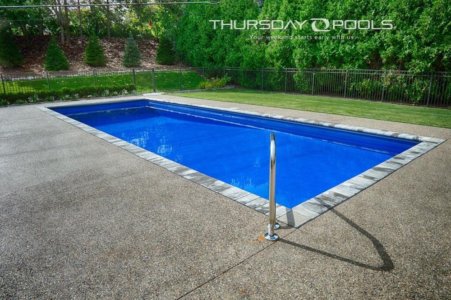
MONOLITH (16’ x 40’)
The Monolith offers a striking, full-sized fiberglass pool that combines luxury with practicality for Georgia homeowners with more room to work with. Measuring 40 feet in length, the expansive Monolith is ideal for those who want ample space for swimming laps, hosting poolside gatherings, or simply enjoying the outdoors. The Monolith is perfect for active use and relaxation, featuring a full-length swim lane, built-in tanning ledge, and dual-end benches.
The Monolith is well-suited for larger properties in areas like Johns Creek, Alpharetta, or rural Georgia, where space is abundant. The average cost for a standard installation of the Monolith and similar 40-foot fiberglass pools in Georgia is approximately $120,000.
Evaluating Your Georgia Property for Fiberglass Pool Installation
Georgia’s varied landscape can affect the cost and process of fiberglass pool installation. In regions like the North Georgia mountains, rocky or uneven terrain may require extra excavation and equipment, raising costs. Flatter areas like the Piedmont or coastal plains might present fewer digging challenges but could require special clay or sandy soil treatments.
The layout of your property is also important. Sloped yards, common in areas like Blue Ridge or suburban homes in cities like Lawrenceville, may require additional grading. In urban areas like Atlanta, narrow streets or gated communities might necessitate cranes for pool shell installation.
Partnering with a local pool expert can help navigate Georgia’s unique challenges, ensuring a smooth and cost-effective installation.
AVERAGE ADDITIONAL YARD-RELATED EXPENSES IN GEORGIA
|
| Excavating Rocky Soil |
$5,000 |
| Above-Average Slope Requiring Extra Grading |
$5,000 |
| Limited Yard Access |
$8,000 |
Understanding Pool Barrier Safety Requirements in Georgia
Pool safety is essential for preventing accidents and restricting unauthorized access, particularly for young children, pets, and other vulnerable individuals. Georgia’s state regulations mandate that residential pools be enclosed by a barrier at least 4 feet high. The barrier must also feature a self-closing and self-latching gate to prevent young children from accessing the pool area without adult supervision. In addition to gate requirements, installers must build the barrier to prevent small children from squeezing through, with gaps between the fence slats not exceeding 4 inches.
While state guidelines set the minimum standards, local municipalities in Georgia may enforce stricter regulations. These can include requirements for taller fences, specific types of fencing materials, or enhanced security features such as additional locks or alarms. To ensure your pool meets state and local safety requirements, check with your local building department or homeowners association for additional codes that may apply in your area.
Before installing a pool, consulting with a local pool professional is highly recommended. They can help guide you through the permitting process and ensure your pool complies with all safety regulations, offering legal peace of mind and enhanced safety for your family and guests.
For a 300-linear-foot fence, Georgia homeowners can expect to pay an average of $8,000 according to estimates from our area dealers.
Enhance Your Georgia Backyard with Pool Add-Ons
Create a custom retreat in your Georgia backyard by adding popular fiberglass pool enhancements. These upgrades boost visual appeal and increase comfort, convenience, and safety. Below, we’ve organized some of the top add-ons chosen by Georgia homeowners, along with average cost estimates from our 2025 survey of Thursday Pools’ independent dealers across the state.
Pool Safety & Barrier Enhancements
Automatic Pool Cover Average Cost in Georgia: $16,000
Enhance safety and convenience with an automatic pool cover that operates at the touch of a button. It helps minimize water evaporation, removes debris, and adds extra protection, especially for families with kids or pets.
Manual Safety Pool Cover Average Cost in Georgia: $5,000
A cost-effective solution for maintaining a clean and secure pool. This durable cover helps prevent unwanted access while keeping leaves, dirt, and other debris out of the water.
Pool Heating & Maintenance Systems
Pool Heater Average Cost in Georgia: $9,000
Keep your pool water at the perfect temperature year-round, even as Georgia nights get colder, and extend your swimming season.
UV Filtration System Average Cost in Georgia: $2,000
Reduce the need for harsh chemicals and enjoy sparkling, clear water with a UV filtration system that effectively neutralizes bacteria and algae.
Automatic Pool Cleaner and Vacuum System Average Cost in Georgia: $1,500
Save time and effort with an automatic cleaning system that keeps your pool pristine and ready for a swim with minimal maintenance.
Pool Automation and Smart Control System Average Cost in Georgia: $8,000
Enjoy ultimate convenience by controlling your pool’s temperature, filtration, and lighting from your smartphone or tablet, offering easy access to pool management from anywhere.
Pool Decking & Landscaping
Concrete Patio (Approx. 1,200 sq. ft.) Average Cost in Georgia: $15,000
A sturdy, cost-effective choice that handles Georgia’s climate well and provides a clean, reliable poolside surface.
Paver Patio (Approx. 1,200 sq. ft.) Average Cost in Georgia: $16,000
Pavers offer a stylish, slip-resistant finish with options like concrete, brick, or natural stone—perfect for customizing your backyard look.
Landscaping Average Cost in Georgia: $15,000
Enhance your pool area with simple landscaping touches like shrubs, flowers, or decorative borders to boost curb appeal.
Water Features & Stylish Accents
Specialty Waterline Tile Average Cost in Georgia: $2,500
Give your pool a custom, high-end finish with decorative waterline tile. This eye-catching detail adds color, texture, and a polished look that elevates your entire poolscape.
LED Pool Lights Average Cost in Georgia: $1,000 per light
Set the mood after sunset with LED pool lights. Choose from crisp white or vibrant color-changing options to create the perfect evening atmosphere, all while keeping energy costs low.
Deck Jets Average Cost in Georgia: $500 per jet
Add a dynamic visual element with deck jets that send graceful streams of water arching into the pool.
Bubblers Average Cost in Georgia: $500 per bubbler
For tanning ledges or shallow areas, bubblers produce gentle, bubbling water effects that are playful and soothing, adding life and motion to your pool.
Cascading Waterfalls Average Cost in Georgia: $5,000
Bring the calming sounds of nature to your backyard with a built-in waterfall feature. Add a spa-like ambiance and enhance the overall aesthetic of your pool.
Add-On Spa Average Cost in Georgia: $16,000
Take your relaxation to the next level with an attached spa. Whether for hydrotherapy or a peaceful retreat, a spa addition offers a stunning spillover effect into the main pool.
Pool Slides and Diving Features
Simple Pool Slide Average Cost in Georgia: $5,000
Bring a playful element to your pool with a traditional slide—simple, fun, and great for family enjoyment.
Deluxe Pool Slide Average Cost in Georgia: $15,000
For a more adventurous experience, a deluxe slide offers extra height and curves for added excitement.
Diving Board (Type 1 Diving Pools Only) Average Cost in Georgia: $1,000
Diving boards are only permitted for certified Type 1 diving pools that meet specific depth and slope standards. Proper planning and installation are essential for safe use.
Due to safety concerns, Thursday Pools strongly discourages slides and diving boards. Not all fiberglass pool models support these features. If you’re considering adding one, it’s crucial to consult a licensed professional to ensure compliance with local codes, safety regulations, and manufacturer specifications. Homeowners and installers share responsibility for safe installation and use. Always prioritize safety and expert guidance before adding diving or sliding elements to your pool.
Bring Resort-Style Living Home with a Georgia Fiberglass Pool
A fiberglass pool in Georgia is more than just a home upgrade—it’s a gateway to year-round relaxation, quality family time, and elevated outdoor living. Whether you’re embracing the coastal charm of Savannah, the energy of Atlanta’s suburbs, or the scenic beauty of North Georgia, a well-designed pool can transform your backyard into a personal retreat and add long-term value to your home.
Georgia’s varied landscape brings unique design opportunities and challenges from wooded lots to wide-open spaces. That’s why working with a trusted local Thursday Pools dealer is essential. Your dealer will assess everything from terrain and soil conditions to climate and layout, ensuring your pool design fits seamlessly with your property and lifestyle.
Ready to bring your vision to life? Explore pricing with the Thursday Pools Pool Cost Calculator, discover your perfect fit using the Pool Selector Tool, and connect with a Georgia dealer to start planning your custom backyard escape today.
Get Your Personalized Estimate
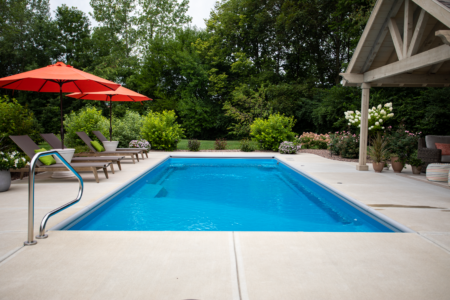 Association Fees or Permits
Association Fees or Permits